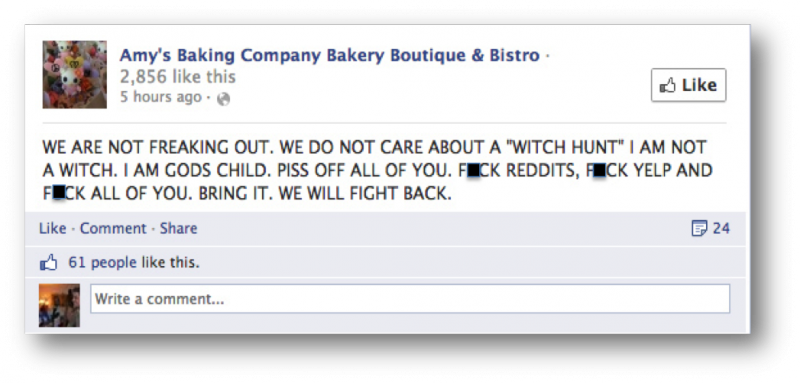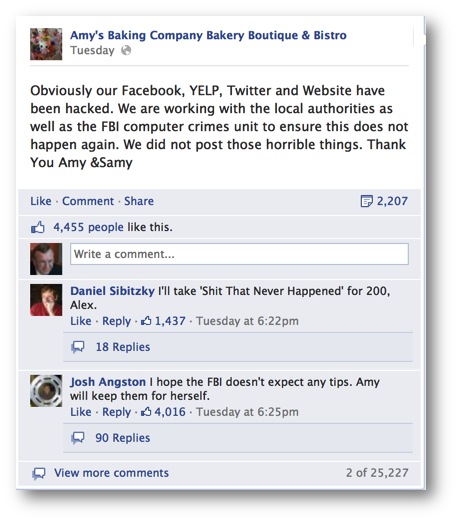Whether it’s your website’s technical malfunction, a customer service issue gone viral or the introduction of an unfriendly government regulation, there will come a time in every company’s life when something goes wrong.
And in those moments, your customers, the press and the rest of your industry will be looking at how you respond.
You’ll definitely have a knee-jerk reaction – and in this era of immediacy, it’s all too easy to jump on your favorite social media platform and word vomit your personal position. But this is exactly what you should not do.
That said, immediacy is not a bad thing, especially because of social media, where news spreads around the globe in a matter of minutes. Working quickly to craft a statement or provide a solution will be paramount to success – but that does not mean you should be in such a rush that you sacrifice careful thoughtfulness.
They say when the going gets tough, the tough get going – and where you should get going is straight to your communications team and public relations agency to craft a plan. Here’s what you should keep in mind.
Don’t Panic (or, at least, don’t panic in public)
It’s not that you can’t panic at all – you can (and most likely will) panic. Internally. Not on social media, not in a press release, and absolutely not in front of reporters. When you respond, you’ll want to be calm, collected and measured – not having a meltdown in front of the world.
After you’ve taken a breath and had a glass of water (or something stronger than water, we won’t judge), you should activate your crisis team – executives, your communications department, your PR agency – and put out a holding statement until you have had time to craft a proper response.
Get Your Thoughts Together
Once the initial emotions of shock, anger, or sadness (perhaps all three?) have passed, you’ll need to sit down with your team and investigate what the facts of the incident are and what this means for your business. Go over every possibility, every point – you need to know all of it in order to work through it. Once you’ve considered exactly what this crisis means for your company, then you can begin to determine the company’s stance.
Understand What Your Customers Expect to Hear
But before you put a statement together, you’ll also need to consider what your customers are expecting. Depending on the situation, they may want refunds, a major discount or special code to be used in the future – but what they expect is a genuine apology and assurance that action is being taken so that this does not happen again in the future.
Put yourself in their shoes and think about how you would feel if a business you loved made a mistake or was in a perilous situation similar to what your company is facing.
Find the Middle Ground
With both the business thinking and customer thinking in mind, work to find the middle ground. Consider what sort of solution is the appropriate course of action for your business. Once your positioning and solution have been determined, it’s time to start writing a statement in earnest.
Prepare Your Statement(s) – And Notify the Larger Team
Consider the types of statements you’ll need to confront this crisis and take control of the narrative. This could be a press conference, a press release, posts across social media channels, emails to your customers, app notifications – and it likely will be a mixture of some or even all of these options, depending on the situation. Once you know the channels through which you’re responding, then make sure to draft, edit and polish suitably.
Once these drafts are ready to go, be sure to brief the rest of the company before you blast the statements out. Your people will be dealing with customers or clients (or both!) getting in touch after your statement is out in the world, and they should be prepared for how to respond based on the company’s position.
Keep Monitoring
Once you’ve published your statement, use social and media monitoring tools to keep tabs on how your solutions are sitting with customers, and if they are working the way you hoped. Fingers crossed everything goes smoothly – but if the conversation turns negative, then you should work to address all concerns before attempting to move on from the issue.
Though no business ever wants to have a crisis on its hands, in the event that you walk into the office and find yourself in the middle of one, it’s important to have a plan for what happens in crisis mode. With enough deep breaths, facts and level-headed thinking, your company can weather this and emerge from it stronger – and even in a way that may win you new customers. It is possible – so long as you don’t panic.
Concerned about stumbling instead of stepping forward? We’re here for you – reach out to us by emailing [email protected].


